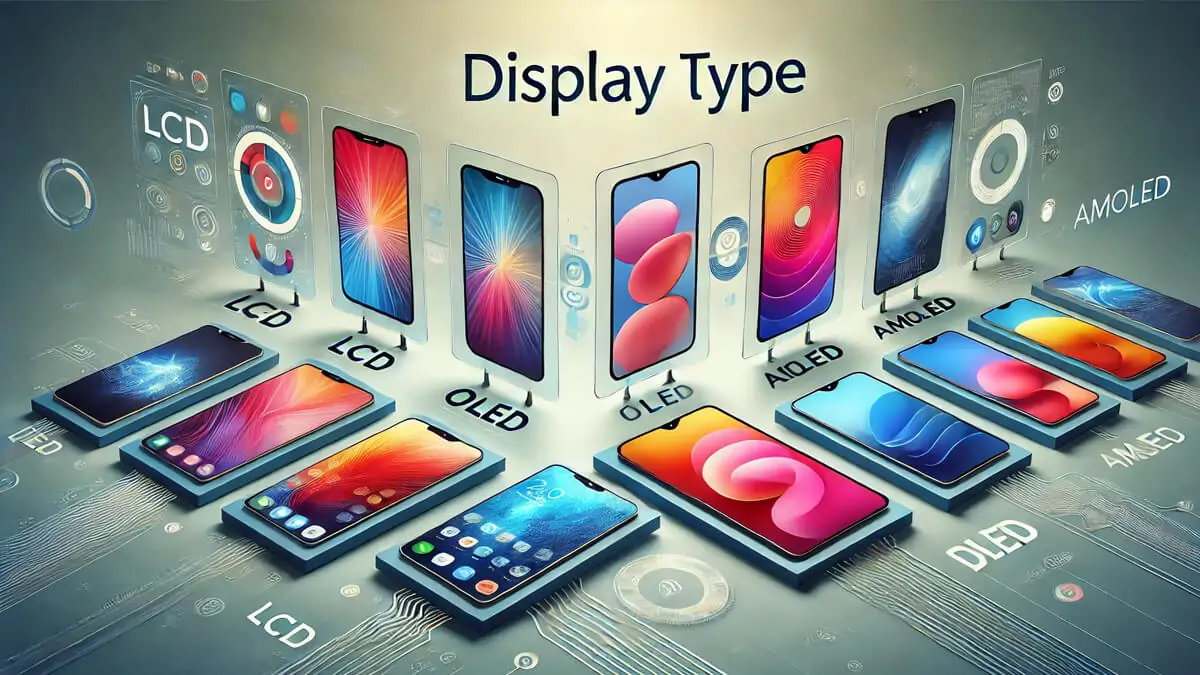Display type refers to the technology used in screens to show visuals, including text, images, and videos, on electronic devices like smartphones, tablets, laptops, and televisions. The display type determines various aspects of the screen’s performance, such as color accuracy, brightness, viewing angles, and power consumption. Different display technologies offer distinct advantages and are chosen based on the device’s intended use and design requirements.
Common Display Types
- LCD (Liquid Crystal Display): LCDs are among the most common display types used in electronic devices. They use liquid crystals sandwiched between two layers of glass or plastic. When electric current passes through, the crystals align to block or allow light to create an image. LCDs are known for their good color reproduction and brightness.
- LED (Light Emitting Diode): LED displays are a type of LCD that uses LED backlighting instead of the traditional fluorescent lights. This technology allows for thinner displays, improved energy efficiency, and better contrast ratios. LED displays are commonly used in televisions, monitors, and laptops.
- OLED (Organic Light Emitting Diode): OLED displays use organic compounds that emit light when an electric current is applied. Unlike LCDs, OLEDs do not require a backlight, allowing for deeper blacks, higher contrast ratios, and more vibrant colors. OLED screens are used in high-end smartphones, televisions, and other premium devices.
- AMOLED (Active Matrix Organic Light Emitting Diode): A subtype of OLED, AMOLED displays include an active matrix of thin-film transistors (TFT) that provide faster response times and better energy efficiency. AMOLED is widely used in smartphones, smartwatches, and other portable devices for its superior color reproduction and thinner design.
- QLED (Quantum Dot LED): QLED displays use quantum dots, tiny semiconductor particles, to enhance the brightness and color accuracy of LED displays. They offer vibrant colors and high brightness levels, making them popular in high-end televisions.
- IPS (In-Plane Switching) LCD: IPS is a type of LCD that provides better color accuracy and wider viewing angles compared to traditional LCDs. It is commonly used in monitors, smartphones, and tablets where color fidelity and viewing angle are important.
- TFT (Thin-Film Transistor) LCD: TFT is a variant of LCD technology that uses a thin-film transistor for each pixel, allowing for higher resolution and faster response times. It is widely used in computer monitors, televisions, and smartphones.
Uses of Different Display Types
- Smartphones and Tablets: Displays in these devices need to be bright, energy-efficient, and provide good color accuracy. OLED and AMOLED displays are popular for their superior quality and energy efficiency.
- Laptops and Monitors: IPS and TFT LCDs are commonly used for their good color reproduction and wide viewing angles, which are important for graphic design, video editing, and general use.
- Televisions: LED, OLED, and QLED displays are popular choices for televisions, offering a range of options from budget to premium. These technologies provide vibrant colors, high brightness, and deep contrast levels.
- Wearables: Smaller displays like those in smartwatches often use AMOLED technology for its energy efficiency and superior display quality in small form factors.
Importance of Display Type
The choice of display type significantly affects the user experience, influencing factors such as image quality, viewing comfort, and battery life. For instance, OLED and AMOLED displays offer superior color accuracy and contrast, making them ideal for media consumption and gaming. LCD and LED displays, on the other hand, are more common in budget-friendly devices and offer good performance for general use. As display technology continues to evolve, newer types like MicroLED and MiniLED are emerging, promising even better performance and efficiency.



